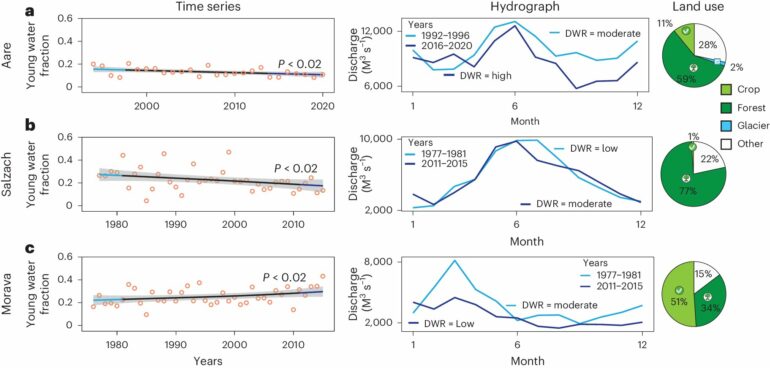An international science team has made significant strides in understanding river flow dynamics. The findings leverage isotope hydrology techniques such as measuring stable isotopes in water molecules to elucidate the contributions of various water sources to river flow, offering critical insights for ecosystem management and hydrological risk assessment.
This latest research is published in Nature Water and is a collaboration of scientists from the German Leibniz Institute for Zoo and Wildlife Research (Leibniz-IZW) with the International Atomic Energy Agency (IAEA), the Federal Institute of Hydrology, Germany, and Stellenbosch University in South Africa.
The international science team analyzed the stable isotopes of oxygen and hydrogen in water molecules from 136 perennial rivers and 45 large catchments worldwide. Dr. David Soto, scientist and isotope specialist at the Leibniz-IZW, assisted in the modeling of precipitation isotope data and its validation for the calculation of the dynamic water retention indicator, which is essential for depicting river flow dynamics. Water retention describes the retention, storage and distribution of precipitation.
High dynamic water retention indicates slow water movement through catchments, suggesting a slower response to hydroclimate events. In contrast, low dynamic water retention signifies rapid water movement and a much quicker response to such events. The team identified key factors influencing dynamic water retention, including land-use changes (such as crop and forest cover) and climate changes (such as air temperature and precipitation). These factors significantly affect how water moves through river catchments, affecting the “age” of water in rivers and their overall dynamics.
“By using models to predict precipitation isotope data, we were able to accurately calculate the dynamic water retention indicator, a crucial tool for understanding river flow dynamics,” says Soto. “Our validation of these models ensures their reliability, providing valuable insights into how climate change and land-use patterns affect river systems. Monitoring stable isotopes in natural water systems is vital for predicting and mitigating hydrological risks to improve the management of our natural resources.”
Rivers are crucial for supporting diverse ecosystem services. They nurture riverine animal and plant communities, deliver essential nutrients to the marine environment, provide transport routes for trade, generate hydroelectric power and offer recreational opportunities. Even during dry periods, rivers often continue to flow, owing to contributions from several sources, including direct precipitation, surface runoff, interflow through soil, and base flow from groundwater.
Climate change and land-use changes are significantly altering water movement through river catchments, affecting the “age” of water in rivers. This phenomenon, akin to river aging, has profound implications for the services which rivers provide. For instance, the low levels of the River Rhine during the European summer of 2023 disrupted the flow of goods and services because conventional ships could not move anymore, highlighting the critical need for understanding these dynamics.
Catchments with low dynamic water retention are more susceptible to hydrological extremes such as droughts and floods. Therefore, dynamic water retention serves as a crucial indicator for hydrological risk assessment, aiding in the prediction and mitigation of the impacts of climate and land-use changes on river systems.
Ensuring that rivers continue to provide their essential services to ecosystems and human societies alike is paramount. By understanding and monitoring water retention and flow dynamics, it will become easier to adjust to and manage the challenges posed by a changing climate and evolving land-use patterns.
More information:
Yuliya Vystavna et al, Predicting river flow dynamics using stable isotopes for better adaptation to climate and land-use changes, Nature Water (2024). DOI: 10.1038/s44221-024-00280-z
Provided by
Leibniz Institute for Zoo and Wildlife Research
Citation:
Predicting river flow dynamics using stable isotopes for improved ecosystem health (2024, October 1)



